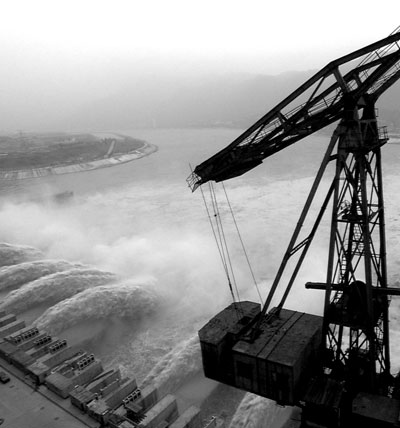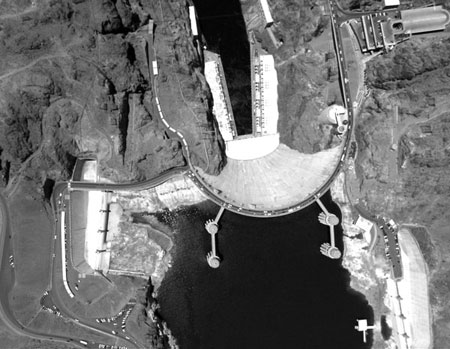Chapter 11
By Eugene F. Provenzo, Jr. and Cory A. Buxton
The Effects of Damming Rivers

Three Gorges Dam in China.
| Florida Sunshine State Standards Benchmark | |
| SC.B. 1.3.51 | The student uses various geographic representations, tools, and technologies to acquire, process, and report geographic information. |
|---|---|
| SS.B. 1.3.4 | The student understands how factors like culture and technology influence the perception of places and regions. |
| SC.B. 2.3.6 | The student understands the environmental consequences of people changing the physical environment in various world locations. |
Damming Rivers
A dam is any structure that is built across a flowing body of water to control or alter the water’s flow. People have been building dams for millennia. Eight thousand years ago, the Sumerians built dams along the Tigris and Euphrates rivers in present-day Iraq. The purpose of dams is to improve quality of life by providing drinking water and supporting economic growth by diverting water for power, flood control, and agricultural irrigation. Today, most of the world’s large rivers are dammed. It has been estimated that there are currently more than 40,000 large dams (over 15 meters high) and 800,000 small dams around the world.

Aerial view of the Hoover Dam on the border of Arizona and Nevada.
In many ways, these dams have been successful. Irrigation of the Western United States, for example, has allowed large-scale farming to flourish in arid conditions. India’s irrigation systems have enabled that country to become a self-sufficient producer of food for over one billion people. Dams have helped in reducing the life-threatening problems of famine as a result of drought, devastation from floods, and disease.
Despite these benefits, the widespread damming of rivers has come under increasing criticism due to a wide range of unintended negative consequences. The adverse effects of dams include the disruption of ecosystems, the decline of fish stocks, the forced resettlements of communities, and, in some cases, increases in disease. New damming projects face increased opposition. Despite this, the world’s largest dam is nearing completion in China.
China’s Yangtze River is the world’s third largest river. It stretches for 3,700 miles across China and provides life-sustaining water for millions of people who live in the Chinese countryside. It irrigates the majority of the crops that feed the rest of country. The Yangtze’s life-giving waters can also cause devastation and death. Throughout thousands of years of Chinese history, the Yangtze has flooded on an average of about once every ten years. These floods have caused great losses of life and infrastructure. As more and more businesses and factories sprung up along the river, there were increased calls to dam the Yangtze. After decades of debate, construction of the Three Gorges Dam was begun by the Chinese government in 1994. Originally scheduled for completion in 2007, delays have pushed the completion date back to 2011.
Critics of the Three Gorges Dam continue to warn that when the project is completed, it will destroy the delicate ecosystem of the river, killing many of the fish and dramatically increasing pollution of the Yangtze as it becomes increasingly stagnant. Further, the flooding of the area behind by the dam will bury archaeologically valuable temples and burial grounds, as well as causing the forced displacement of between four and five million people.
Activity: The Three Gorges Dam
In the following activity, you will prepare for a debate on the whether the Chinese government should complete the construction of the Three Gorges Dam.
Find information about the area that would be affected by the dam.
Start with the following website: http://www.pbs.org/newshour/bb/asia/july-dec97/gorges_10-8.htmlFrom there, conduct additional on-line searches to gather more information about the Three Gorges Dam project.
- From the information you gather, fill in both the benefits and the costs columns of the Three Gorges Dam Activity Worksheet on page 58.
- Make a decision about whether you are in favor or against the Three Gorges Dam.
- Your teacher will assign you to “pro” and “con” teams to have a debate on the statement: The Three Gorges Dam is a benefit to the Chinese people.
- Remember that when you have a debate, the goal is to present facts and evidence and not just to argue with the other team.
After the debate, consider the following summary questions:
- Did any of your opinions about dams change as a result of the debate? Why or why not?
- If your city was planning to build a new dam, what advice would you give the mayor?
- Do you think the importance of dams is different in developed and developing countries? Why or why not?
Exploring One Water
Look at the following clip of the Three Gorges Dam in China.
Consider the Quote
“The creation of huge reservoirs allows some control over the flow of the river itself…But the [river] is not just a machine. It is an organic machine…For no matter how much we have created many of its spaces and altered its behavior, it is still tied to larger organic cycles beyond our control.” —Richard White, The Organic Machine, commenting on the Hoover Dam
Extension Activities
Elementary School Students
Google Earth is an online mapping software, as well as a tool for viewing, creating, and sharing site/location-specific information. Download Google Earth to your computer or library classroom and take a tour with your students of your local community. Have them note where bodies of water such as rivers and streams are located. Create a poster-size hand-drawn map with the assistance of your students.
Multimedia
Copy the map you have created with your students to a web page or create a Power Point™ page. Have students collect together photographs of different bodies of water in their community and have them insert them into the map.
Middle School Students
Have students visit the “Rising Sea Level Animation,” created by Zoltán Büki, available on Google Earth. Have them create a list of ten major cities from around the world that will be flooded if sea levels continue to rise because of global warming.
Multimedia
Use the local community list generated by students to go out and document with photographs the sources of water pollution that they can find in their communities. Have them create a bulletin board exhibit or website with their photographs.
Secondary School Students
Who owns the water in a river? Is it the people at the headwaters or the beginning of its flow, or is it everyone over whose land the river flows? If a river is totally blocked by a dam, is it just “tough luck” for the people below the dam? Have students explore online the history of the Colorado River. Ask them to write a brief history (two pages double-spaced) of how the water rights for the seven states the river runs through have been dealt with by politicians and the government.
Multimedia
Have students create a multimedia history using Power Point™ of Water Rights Issues and the Colorado River.
